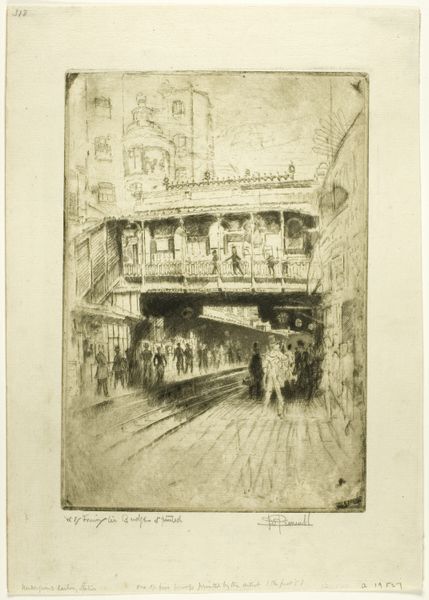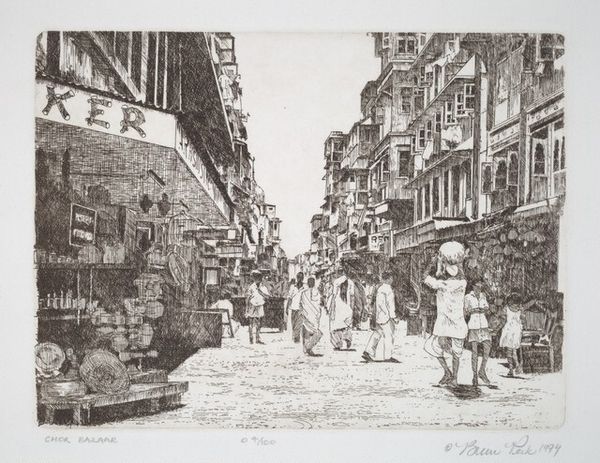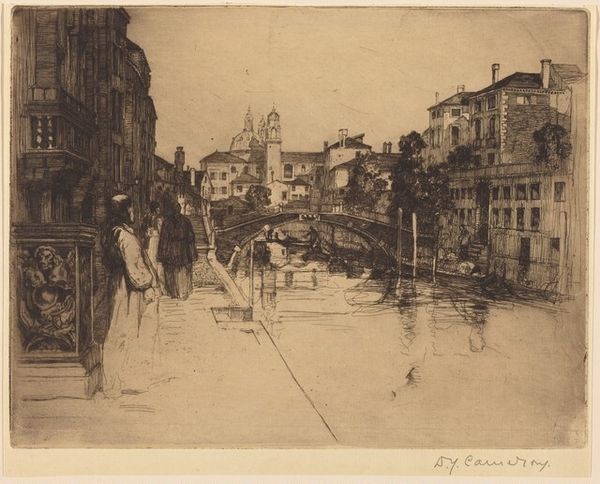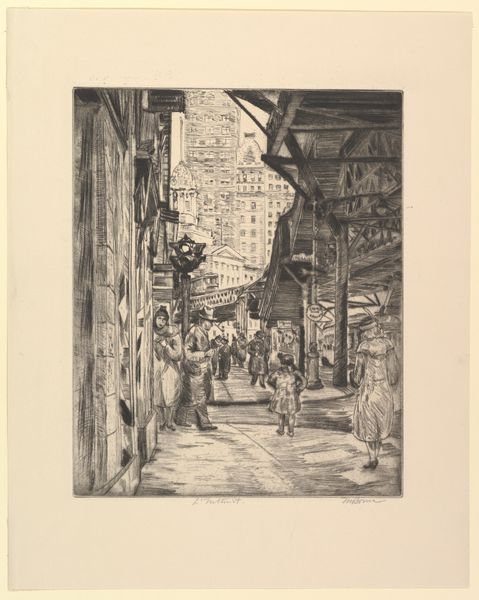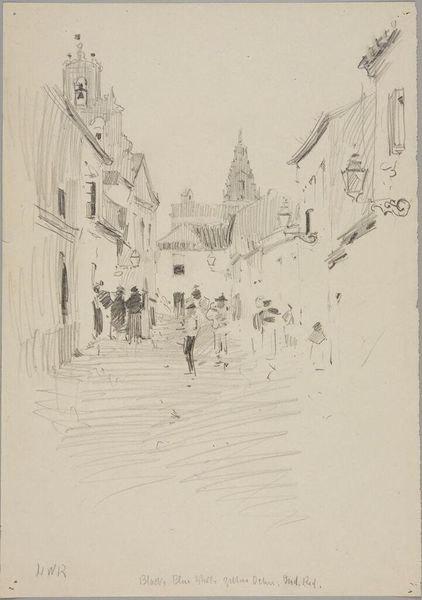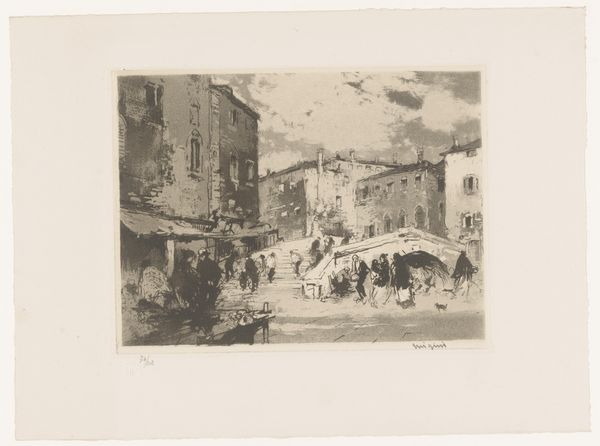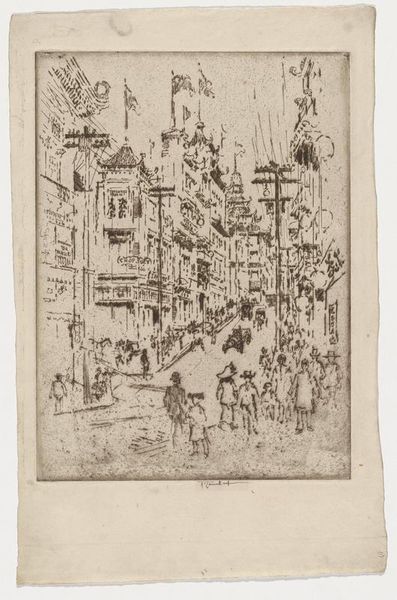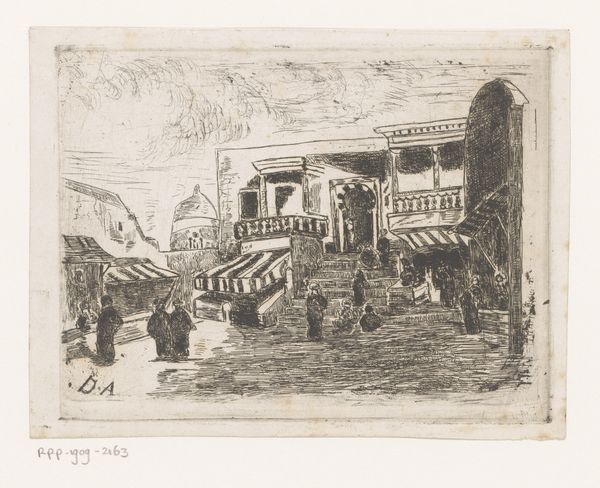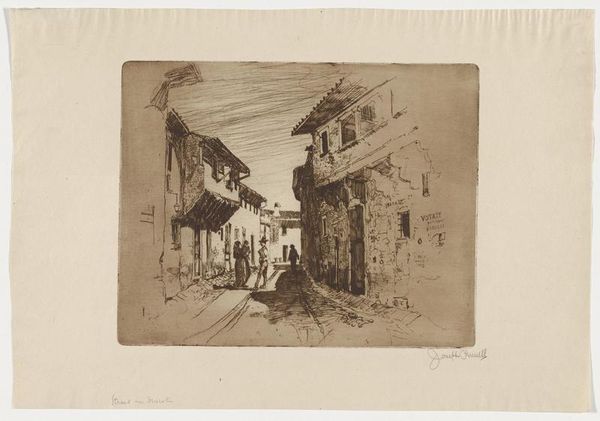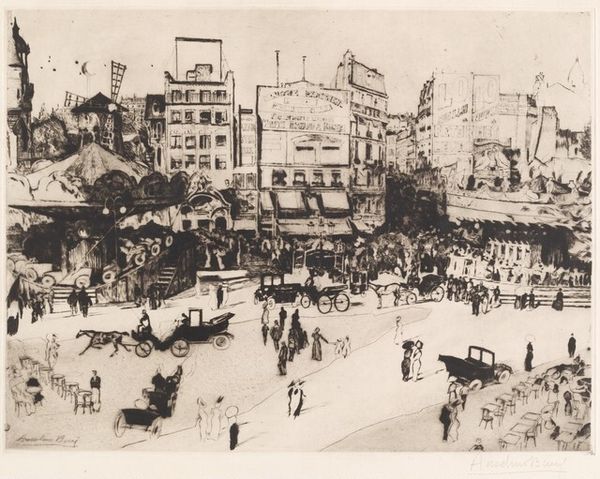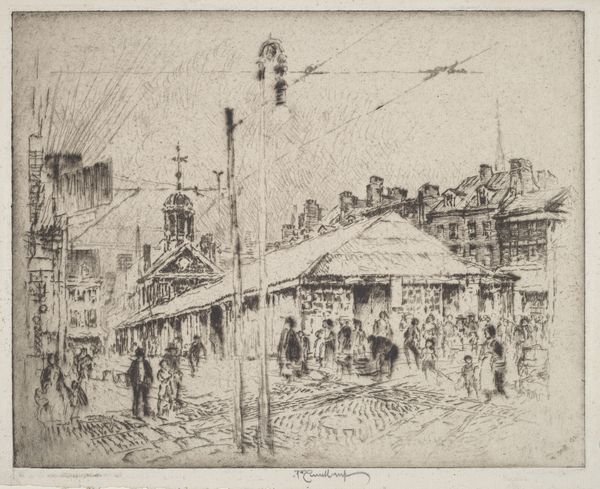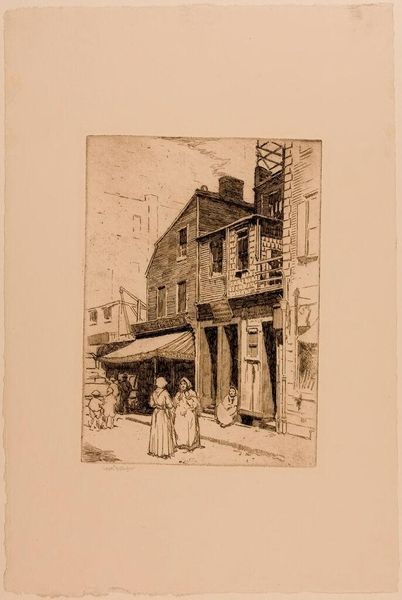
Copyright: CC0 1.0
Curator: Let's discuss Robert Charles Goff's "Old Florence," held here at the Harvard Art Museums. It captures a bustling street scene. Editor: It feels incredibly immediate, like a snapshot. The texture created by the etching technique really brings the scene to life; you can almost feel the grit of the street. Curator: Absolutely. Goff was interested in portraying the everyday experience of urban life, documenting the changing cityscapes and social dynamics of late 19th-century Europe. The etching process allowed for the mass production of images, making art more accessible to a wider audience. Editor: And that reproducibility is key. Consider the labor involved—the skilled hand of the etcher but also the systems that allowed for these images to circulate and be consumed. It moves beyond just representing Florence; it's about participation within a market. Curator: Precisely! It’s not just a pretty picture; it reflects a shift in how art was produced and circulated, influencing public perception and taste. Editor: A dense print to consider! It underscores how the commodification of art creates a new visual economy. Curator: Indeed. Goff's Florence reveals a rich intersection of artistic skill and social context.
Comments
No comments
Be the first to comment and join the conversation on the ultimate creative platform.
